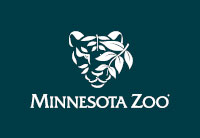 The goitered gazelle (Gazella subgutturosa) lives in a desert habitat throughout the Middle Eastand into parts of Asia such as China, Pakistan, and Mongolia. Regionally the goitered gazelle has become extinct in three countries: Armenia, Georgia, and Kuwait. Their populations have been continuously declining from an estimated population size of 120,000-140,000 due to habitat loss and hunting. According to the IUCN Redlist, the goitered gazelle is considered “vulnerable to extinction”.
The goitered gazelle (Gazella subgutturosa) lives in a desert habitat throughout the Middle Eastand into parts of Asia such as China, Pakistan, and Mongolia. Regionally the goitered gazelle has become extinct in three countries: Armenia, Georgia, and Kuwait. Their populations have been continuously declining from an estimated population size of 120,000-140,000 due to habitat loss and hunting. According to the IUCN Redlist, the goitered gazelle is considered “vulnerable to extinction”.
The ecological center “Djeiran” was established near Bukhara, Uzbekistan in 1977 with the main goal of breeding goitered gazelles for reintroductionin suitable habitats in Uzbekistan and other areas of Central Asia. Gazelle populations in the 5,126 hectare fenced-in center have climbed to 902 animals (October 2009) from an initial start of 44 animals in 1977. Established gazelle populations in the semi-reserve will be used for reintroduction efforts in new desert ecosystems throughout Uzbekistan and Central Asia, including former portions of the Aral Sea. The Ulysses S. Seal Grant Program has supported the rearing and translocation of goitered gazelles. This project was championed by Tony Fisher, Animal Collection Manager at the Minnesota Zoo.



